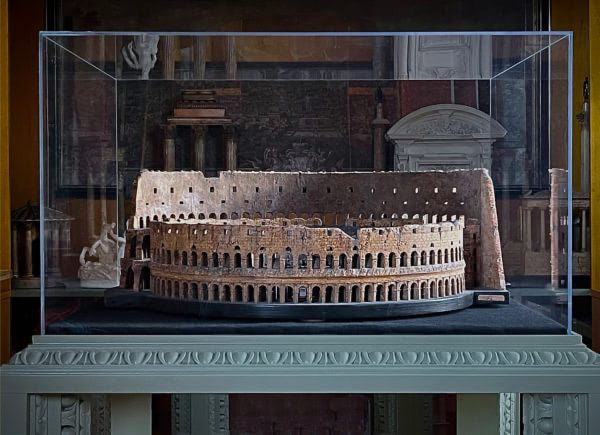A detail of the carved cork Colosseum model. The history of cork architectural models begins in the late 17th century. The irregular surface of cork resembles that of ancient stone, with its fissures, divots, voids and other losses. By the later 18th century, well-heeled visitors to Rome might return with any of a variety or cork models of the city’s weathered monuments. By the mid 19th century, with Italian tourism a more democratic phenomenon, these intricate, highly-realized, expensive mementos lost favor, replaced by much smaller (and less expensive) replicas. Note the absence of reflections in the Optium Museum Acrylic cover.
Share this Article:
This article is intended for educational purposes only and does not replace independent professional judgment. Statements of fact and opinions expressed are those of the author(s) individually and, unless expressly stated to the contrary, are not the opinion or position of Tru Vue or its employees. Tru Vue does not endorse or approve, and assumes no responsibility for, the content, accuracy or completeness of the information presented.
